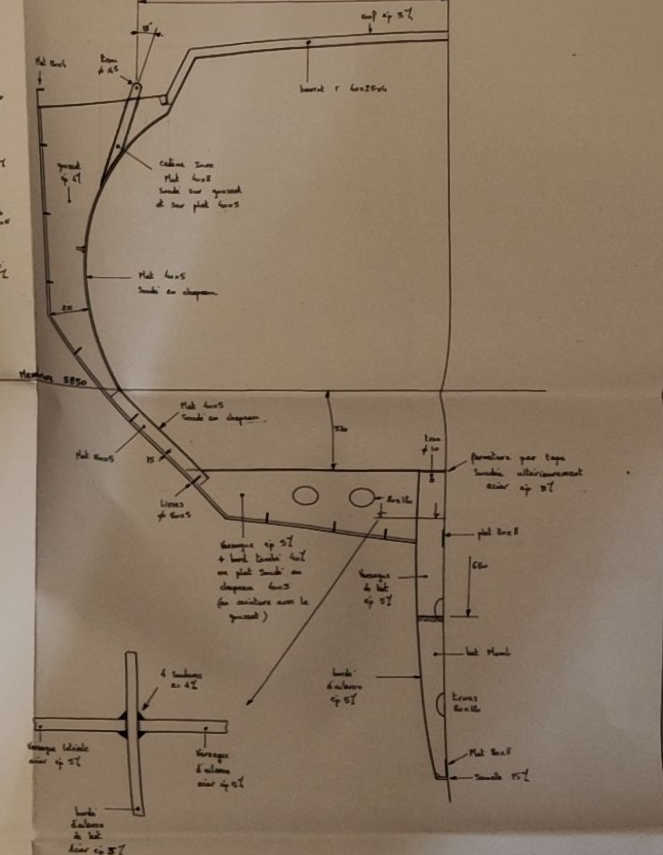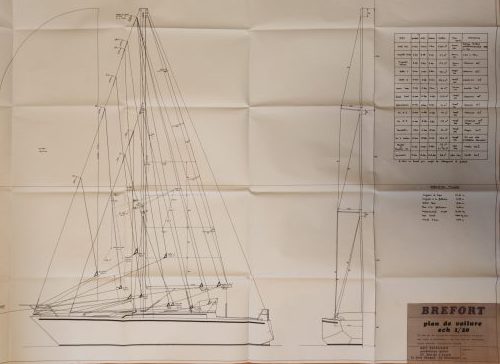I couldn’t believe it. Today I received a message from the French National Archives. A few weeks ago I surfed their website to look up documents in relation to the design of the SUN. I found a table of contents refferring to a collection of documents covering the type-registration and classification of all pleasure boats registered in France between 1966 and 1989. Wow – the BREFORT model from Garcia is included. The type approval was archived exactly 40 years ago in 1983.
Here is a description of the contents:
Art 1-85 : Liste de dossiers d’approbation de modèles de navires de plaisance comportant au plus :
- un descriptif du bateau,
- the plans of the vessel,
- the list of the boat’s technical characteristics,
- the correspondence “mer” with the builder or the importer,
- the decision of approval after passage in commission.
classement sériel par n° de dossier d’approbation.
1966-1989
I will now receive an order invoice for the copies from the National Archives and, if all goes well, a set of 16 A4 pages and 7 large-format general plans with all the necessary information about the ship.
In the meantime, the designer GUY Saillard has got back to me. He has now found some old plans in his place and is prepared to send them to me. So something is advancing here too.
With a bit of luck, I will have a complete set of measurement and design documents.
Today in March, Guy Saillard sent me the plans that he still had available in his private archive. A real treasure. Although the plan was originally drawn up for a steel ship, the construction documents practically correspond to the design of the SUN. I think that only the material thicknesses were adjusted to take account of the changed material properties of aluminium.

As soon as I’m back on the boat in 2 weeks, I’ll make a few comparisons with the plans. As I’m not yet very familiar with shipbuilding, I’m not yet sure which material characteristics are suitable for what kind of design. As the main task of the hull’s outer skin is to realise the displacement in the water, the mechanical properties of the outer skin are surely of secondary importance. When I look at the plans, I think that the prestressing forces of the rig are mainly distributed by the frame construction and the transverse ribs. The hull is only connected to these frames and ribs at certain points, and the gap between them is quite generous. So if the yield strength or the bending stiffness of the aluminium has been adjusted in comparison to the steel, I should be able to determine this from the material thickness of the frames in the aluminium boat.
What is astonishing about the design of the SUN is that a very robust beam design is used to introduce the shroud forces. This goes so far that the frame construction extends deeply into the interior space below deck to optimise the triangle of forces. It is designed in a way that the linear forces can be transferred to the bottom third of the hull. This means that the forces are not introduced in the upper third, as is usual with GRP decks, but much closer to the waterline level. The advantage is obviously that the shroud forces transverse to the hull are introduced more or less at the bottom line of the frame. The shear forces are then introduced as far as possible into the lower frame girder and to a much lesser extent than usual in the form of bending forces into the more vertical parts of the frame.

